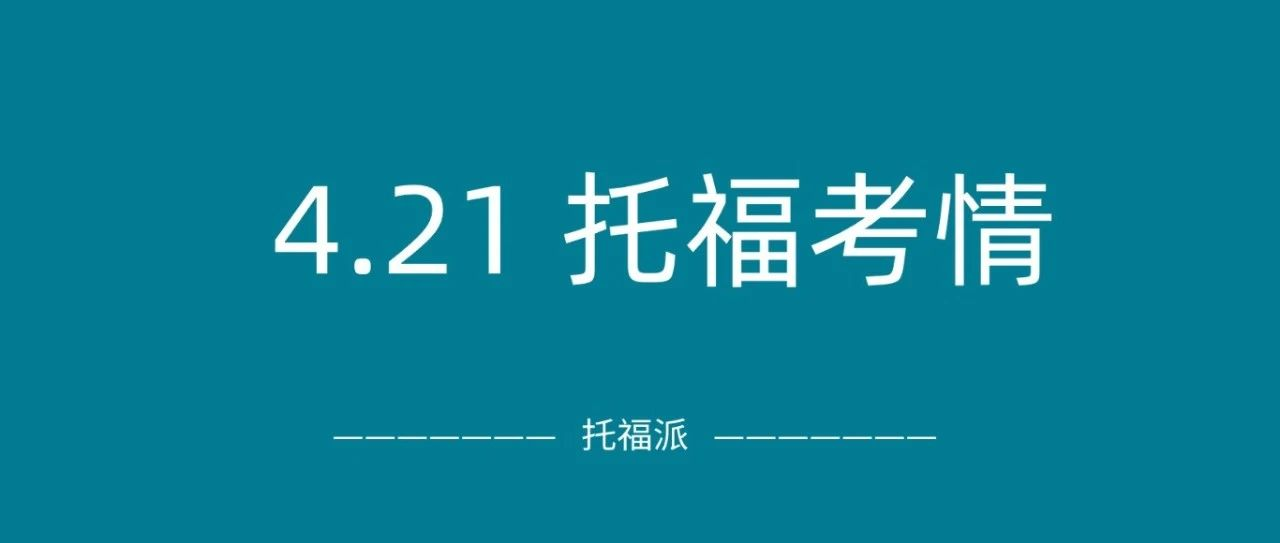

5月的SAT考试刚刚结束,今年5月考试对很多同学来说应该是福音。因为5月通常有很多被转考过来的成人考生(老师),所以前两年亚太卷的难度都不算低,但今年CB爸爸画风一转,给各位考生送上了一场整体简单的亚太SAT。本次就香港的情况来看,参加考试的考生人数比起3月是有所增加的;那么今天都考了些啥,题型的分布又是怎样的呢? TD为你带来了这份完整的考情回顾并且附上了阅读部分文章原文,速来围观!
这次考试阅读整体并不是很难,而且很多机构分享了部分原文和题目考什么,所以这次阿满老师帮助大家梳理一遍这次考试的题型分布,以便大家能宏观的掌握SAT的考试方向。
阅读部分
Passage 1
文章类型:literature
Author:Nicolai Gogol
选自:Excerpted from The Mysterious Portrait
原文再现:
Young Chartkov was an artist with a talent that promised much: in flashes and moments his brush bespoke power of observation, understanding, a strong impulse to get closer to nature.
“Watch out, brother,” his professor had told him more than once, “you have talent; it would be a sin to ruin it. But you’re impatient. Some one thing entices you, some one thing takes your fancy—and you occupy yourself with it, and the rest can rot, you don’t care about it, you don’t even want to look at it. Watch out you don’t turn into a fashionable painter. Even now your colors are beginning to cry a bit too loudly. Your drawing is imprecise, and sometimes quite weak, the line doesn’t show; you go for fashionable lighting, which strikes the eye at once. Watch out or you’ll fall right into the English type. Beware. You already feel drawn to the world: every so often I see a showy scarf on your neck, a glossy hat. . . It’s enticing, you can start painting fashionable pictures, little portraits for money. But that doesn’t develop talent, it ruins it. Be patient.Ponder over every work, drop showiness—let the others make money. You won’t come out the loser.”
The professor was partly right. Sometimes, indeed, our artist liked to carouse or play the dandy—in short, to show off his youth here and there. Yet, for all that, he was able to keep himself under control. At times he was able to forget everything and take up his brush, and had to tear himself away again as if from a beautiful, interrupted dream. His taste was developing noticeably. He still did not understand all the depth of Raphael, but was already carried away by the quick, broad stroke of Guido, paused before Titian’s portraits, admired the Flemish school. 6 The dark surface obscuring the old paintings had not yet been entirely removed for him; yet he already perceived something in them, though inwardly he did not agree with his professor that the old masters surpassed us beyond reach; it even seemed to him that the nineteenth century was significantly ahead of them in certain things, that the imitation of nature as it was done now had become somehow brighter, livelier, closer; in short, he thought in this case as a young man thinks who already understands something and feels it in his proud inner consciousness. At times he became vexed when he saw how some foreign painter, a Frenchman or a German, sometimes not even a painter by vocation, with nothing but an accustomed hand, a quick brush, and bright colors, would produce a general stir and instantly amass a fortune. This would come to his mind not when, all immersed in his work, he forgot drinking and eating and the whole world, but when he would finally come hard up against necessity, when he had no money to buy brushes and paints, when the importunate landlord came ten times a day to demand the rent. Then his hungry imagination enviously pictured the lot of the rich painter; then a thought glimmered that often passes through a Russian head: to drop everything and go on a spree out of grief and to spite it all. And now he was almost in such a situation.
“Yes! be patient, be patient!” he said with vexation. “But patience finally runs out. Be patient! And on what money will I have dinner tomorrow? No one will lend to me. And if I were to go and sell all my paintings and drawings, I’d get twenty kopecks for the lot. They’ve been useful, of course, I feel that: it was not in vain that each of them was undertaken, in each of them I learned something. But what’s the use? Sketches, attempts—and there will constantly be sketches, attempts, and no end to them. And who will buy them, if they don’t know my name? And who needs drawings from the antique, or from life class, or my unfinished Love of Psyche, or a perspective of my room, or the portrait of my Nikita, though it’s really better than the portraits of some fashionable painter? What is it all, in fact? Why do I suffer and toil over the ABC’s like a student, when I could shine no worse than the others and have money as they do?”
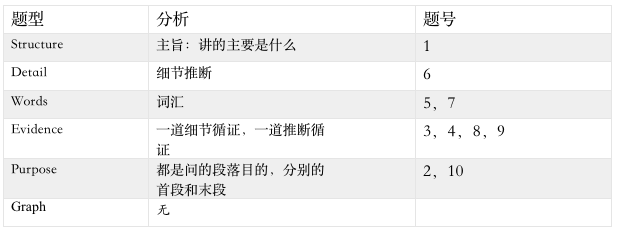
Passage 2
文章类型:social study
Topic:False Memory
原文再现:
Remember That? No,You Don’t. Study Shows False Memories Afflict Us All
Even people with extraordinary memories sometimes make things up without realizing it
It’s easy enough to explain why we remember things: multiple regions of the brain — particularly the hippocampus — are devoted to the job. It’s easy to understand why we forget stuff too: there’s only so much any busy brain can handle. What’s trickier is what happens in between: when we clearly remember things that simply never happened.
The phenomenon of false memories is common to everybody — the party you’re certain you attended in high school,say, when you were actually home with the flu, but so many people have told you about it over the years that it’s made its way into your own memory cache.False memories can sometimes be a mere curiosity, but other times they have real implications. Innocent people have gone to jail when well-intentioned eye witnesses testify to events that actually unfolded an entirely different way.
What’s long been a puzzle to memory scientists is whether some people may be more susceptible to false memories than others — and, by extension, whether some people with exceptionally good memories may be immune to them. A new study in the Proceedings of the NationalAcademy of Sciences answers both questions with a decisive no. False memories afflict everyone — even people with the best memories of all.
(MORE: Creating False Memories in Mice’s Brains — and Yours)
To conduct the study, a team led by psychologist Lawrence Patihis of the University of California, Irvine, recruited a sample group of people all of approximately the same age and divided them into two subgroups: those with ordinary memory and those with what is known as highly superior autobiographical memory (HSAM). You’ve met people like that before, and they can be downright eerie. They’re the ones who can tell you the exact date on which particular events happened — whether in their own lives or in the news — as well as all manner of minute additional details surrounding the event that most people would forget the second they happened.
To screen for HSAM, the researchers had all the subjects take a quiz that asked such questions as “[On what date]did an Iraqi journalist hurl two shoes at President Bush?” or “What public event occurred on Oct. 11, 2002?” Those who excelled on that part of the screening would move to a second stage, in which they were given random,computer-generated dates and asked to say the day of the week on which it fell,and to recall both a personal experience that occurred that day and a public event that could be verified with a search engine.
“It was a Monday,” said one person asked about Oct. 19, 1987. “That was the day of the big stock-market crash and the cellist Jacqueline du Pré died that day.” That’s some pretty specific recall. Ultimately, 20 subjects qualified for the HSAM group and another 38 went into the ordinary-memory category. Both groups weret hen tested for their ability to resist developing false memories during a series of exercises designed to implant them.
(MORE: This is Your Brain on Fairness)
In one, for example, the investigators spoke with the subjects about the Sept. 11 terrorist attacks and mentioned in passing the footage that had been captured of United Flight 93crashing in Pennsylvania — footage, of course, that does not exist. In both groups — HSAM subjects and those with normal memories — about 1 in 5 people “remembered”seeing this footage when asked about it later.
“It just seemed like something was falling out of the sky,” said one of the HSAM participants. “I was just, you know, kind of stunned by watching it, you know, go down.”
Word recall was also hazy. The scientists showed participants word lists, then removed the lists and tested the subjects on words that had and hadn’t been included. The lists all contained so-called lures — words that would make subjects think of other, related ones. The words pillow, duvet and nap, for example, might lead to a false memory of seeing the word sleep. All of the participants in both groups fell for the lures,with at least eight such errors per person—though some tallied as many as 20.Both groups also performed unreliably when shown photographs and fed lures intended to make them think they’d seen details in the pictures they hadn’t.Here too, the HSAM subjects cooked up as many fake images as the ordinary folks.
“What I love about the study is how it communicates something that memory-distortion researchers have suspected for some time, that perhaps no one is immune to memory distortion,” said Patihis.
What the study doesn’t do, Patihisadmits is explain why HSAM people exist at all. Their prodigious recall is a matter of scientific fact, and one of the goals of the new work was to see if an innate resistance to manufactured memories might be one of the reasons. Buton that score, the researchers came up empty.
“It rules something out,” Patihissaid. “[HSAM individuals] probably reconstruct memories in the same way that ordinary people do. So now we have to think about how else we could explain it.”He and others will continue to look for that secret sauce that elevates superior recall over the ordinary kind. But for now, memory still appears to be fragile, malleable and prone to errors — for all of us.
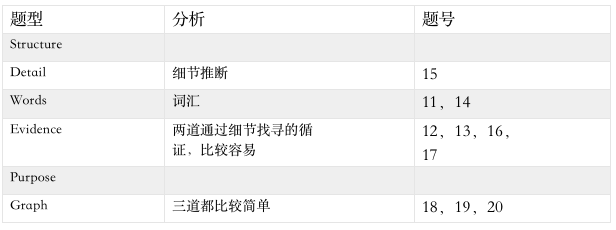
Passage 3
文章类型:science
Topic:Beans’ talk
原文再现:
THE idea that plants have developed a subterranean internet, which they use to raise the alarm when danger threatens, sounds more like the science-fiction of James Cameron’s film “Avatar” than any sort of science fact.But fact it seems to be, if work by David Johnson of the University of Aberdeen is anything to go by. For Dr Johnson believes he has shown that just such an internet, with fungal hyphae standing in for local Wi-Fi, alerts beanstalks to danger if one of their neighbors is attacked by aphids.
Dr Johnson knew from his own past work that when broad-bean plants are attacked by aphids they respond with volatile chemicals that both irritate the parasites and attract aphid-hunting wasps. He did not know, though, whether the message could spread, tomato-like, from plant to plant. Sohe set out to find out—and to do so in a way which would show if fungi were the messengers.
Not all of the beanstalks, though, had the same relationship with the fungi. In each mesocosm, one plant was surrounded by a mesh penetrated by holes half a micron across. Gaps that size are too small for either roots or hyphae to penetrate, but they do permit the passage of water and dissolved chemicals. Two plants were surrounded with a 40-micron mesh. This can be penetrated by hyphae but not by roots. The two remaining plants, one of which was at the center of the array, were left to grow unimpeded.
Five weeks after the experiment began, all the plants were covered by bags that allowed carbon dioxide, oxygen and water vapor in and out, but stopped the passage of larger molecules, of the sort a beanstalk might use for signaling. Then, four days from the end, one of the 40-micron meshes in each mesocosm was rotated to sever any hyphae that had penetrated it, and the central plant was then infested with aphids.
At the end of the experiment Dr Johnson and his team collected the air inside the bags, extracted any volatile chemicals in it by absorbing them into a special porous polymer, and tested those chemicals on both aphids(using the winged, rather than the wingless morphs) and wasps. Each insect was placed for five minutes in an apparatus that had two chambers, one of which contained a sample of the volatiles and the other an odorless control.
The researchers found, as they expected from their previous work, that when the volatiles came from an infested plant, wasps spent an average of 3½ minutes in the chamber containing them and 1½ in the other chamber. Aphids, conversely, spent 1¾ minutes in the volatiles’ chamber and 3¼in the control. In other words, the volatiles from an infested plant attract wasps and repel aphids.
Crucially, the team got the same result in the case of uninfected plants that had been in uninterrupted hyphae contact with the infested one, but had had root contact blocked. If both hyphae and roots had been blocked throughout the experiment, though, the volatiles from uninfected plants actually attracted aphids (they spent 3½ minutes in the volatile chamber), while the wasps were indifferent.
The same pertained for the odor of uninfected plants whose hyphae connections had been allowed to develop and then severed by the rotation of the mesh.
Broad beans, then, really do seem to be using their fungal symbionts as a communications network, warning their neighbors to take evasive action. Such a general response no doubt helps the plant first attacked by attracting yet more wasps to the area, and it helps the fungal messengers by preserving their leguminous hosts.
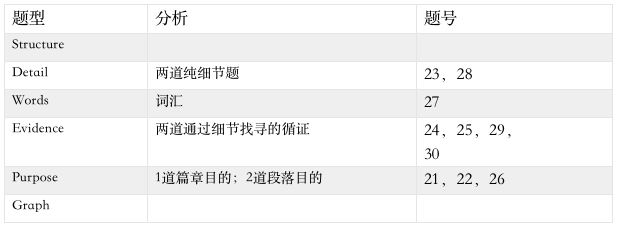
Passage 4
文章类型:History
Topic:Slavery
这次历史双篇两个作者观点相近,但呼吁解决的程度不同。类似文章虽然真题少见,但在可汗的历史双篇里有两篇相似的,大家可以参考P128和P167两篇。

Passage 5
文章类型:Science
Topic:Gouldian Finches’ HeadColour Reflects Their Personality
原文再现:
What this suggests is that behavioural characteristics, such as aggression and other traits, may be correlated with particular head colour morphs meaning that head colour is indicative of different personality types. This idea has been tested in a new paper by Leah Williams and her colleagues.
In order to determine if head colour really does indicate personality traits in Gouldian finches Williams and her colleagues tested a number of predictions. First they looked at pairs of black-headed birds which were expected to show less aggression towards each other than pairs of red-headed birds, this makes sense since red-headed birds had previously been found to exhibit higher levels of aggression.
The second prediction was that red-headed birds should be bolder, more explorative and take more risks than black-headed birds. This hypothesis is based on previous studies of other species that have shown a correlation between aggression and these behavioural characteristics. However, there is another possibility, red-headed birds could take fewer risks for two reasons; first, they may be more conspicuous to predators due to their bright colouration and second, it may pay black headed birds to take more risks and be more explorative so they find food resources before the dominant red-headed birds do.
In order to test the first prediction paired birds of matching head colour were moved into an experimental cage without food. After one hour of food deprivation a feeder was placed into the corner of the cage where there was only enough room for one bird to feed at a time. aggressive interactions such as threat displays and displacements were then counted over a 30 minute period.
The results as shown in the figure below were striking. Red-headed birds were significantly and consistently more aggressive than black-headed birds.
To test the birds willingness to take risks they were deprived of food for one hour before their feeder was replaced. After the birds had calmly begun to feed a silhouette of an avian predator was moved up and down in front of the cage to scare the birds from the feeder. The time it took for them to return to the feeder was taken as a measure of their willingness to take risks, birds that returned quickly were considered to be greater risk takers than those that were more cautious.
This time the results were surprising. Red-headed birds were considerably more cautious than those with black heads at returning to the feeder after a “predator” had been introduced. As the figure below shows they took on average 4x longer to begin feeding again than the less aggressive black-headed birds.
Finally, the authors investigated the birds interest in novel objects or “object neophilia” which is defined in the paper as “exploration in which investigation is elicited by an object’s novelty“. To do this a bunch of threads was placed on a perch within the cage, the time taken for the birds to approach the threads within one body length and to touch them were recorded over a one hour period. In line with the results from the risk taking experiment it was found that the aggressive red-headed birds showed less interest in novel objects than did black-headed birds. The difference is not so striking as the previous experiments but was statistically significant nonetheless.
These experiments were repeated after a two month interval and showed that different birds differed in their responses but the responses of individual birds were consistent over time. Head colour was found to predict the behavioural responses of the birds. Red-headed birds were more aggressive than black-headed birds but took fewer risks and were not explorative.
What is surprising about these results is that aggression does not correlate with risk taking behaviour, however, the authors do provide a convincing explanation, suggesting that…
Interestingly boldness and risk taking behaviours were found to be strongly correlated, regardless of head colour they always occurred together forming a “behavioural syndrome”. This implies that there is selection in favour of specific combinations of traits and of head colour in relation to those traits. Selection favours aggression in red-headed birds and the boldness/risk taking behavioural syndrome in black-headed birds. This makes sense when you consider the high risk of predation faced by red-headed birds if they take too many risks and the need for black-headed birds to find food away from the dominant red heads which occupy the safest foraging locations.
Williams and her colleagues suggest that if red-headed birds are aggressive, and black-headed birds take more risks, this could lead to differences in foraging tactics. For example, black headed birds could increase their foraging opportunities by feeding at more risky sites away from interference by the dominant red-headed birds which feed in safer locations. The lower conspicuousness of their black heads means they are at less risk of predation at exposed sites that red-headed birds would be.
The results of this fascinating study strongly support the hypothesis that head colour does indeed signal personality in Gouldian finches. I would love to see some more research in this area. The authors themselves suggest that more research is needed to find out what roles head colours play in social situations. It would also be interesting to find out how widespread this phenomenon is, given that birds frequently use plumage colouration as signals it seems likely to me that colour may indicate personality in other avian species.

我们把题型分为六大类,SAT的所有考题都是在这六类的分类里,如果同学还不清楚的话,也可以参加我们的备考计划,老师会为大家清晰讲解,还包括所有六类题目的真题分类材料提供给大家~戳这里搭上SAT冲刺快车~和美高党时间完美匹配的SAT备考计划开放报名,6月考试不错过!
语法部分
语法题整体来讲考查的内容都是重要语法点,比如句子结构、标点符号、一致性、修饰语、时态、增删信息、排序、主旨大意、词义辨析、表达简洁和正式等等。考前认真在语法点上下功夫的同学在考场上大有可为。值得注意的是,此次考试中标点符号考点非常巧妙,完全符合平日里讲授的使用规则,但是又需要多几分思考。另外,文法类题目中规中矩,梳理清楚上下文逻辑关系,看懂文章主要观点的情况下完全能做对。
第一篇
Marking Time
本文主要写了BB通过对钟表的研究,进而研究天体运动,将时间精确。通过自身的学习钻研,最终帮助美国选定了capital。他本人也得到广大人民群众尊重和纪念。
第二篇
Energy Storage Under Pressure
本文讲述了新型能源如何有效利用。讲述了风力能源的优缺点以及解决办法caes。讲述了风力的潜力和前景。
第三篇
A Man of Many Words
讲一个作家自己要写一本字典,一开始只是想要单纯的写字典,但是后来想要通过这本字典来产生一些影响。
第四篇
Retailers Benefiting from PayingWell
很多公司通过低价来吸引顾客,这个举动会导致员工薪资的降低。但是如果给员工提薪会带来很多好处,比如减少员工辞职,避免使用没有经验的员工;其次也可以提高员工工作效率,使零售业者获得更多的利益。
总体来讲,5月考试的同学很走运,不仅题目简单,而且可以在上半年提前考出好成绩。对于没有参加5月考试的同学,下半年的几次大考不要再错过了,8,10,12建议大家都先报上,出了成绩再取消都可以。暑假将至,大家努力吧~
最新SAT精校版打包真题+答案解析
欢迎扫码添加TD客服微信
并发送关键字「SAT真题」领取
持续更新哦~
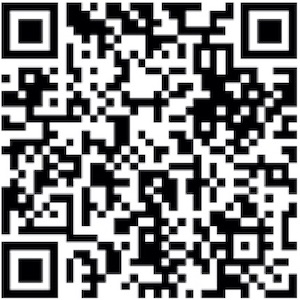
原创文章,作者:zhangran,如若转载,请注明出处:《2018年5月SAT考试回顾:4月原题再现,今天竟然简单的有点不敢相信?》https://www.testdaily.cn/2623/




